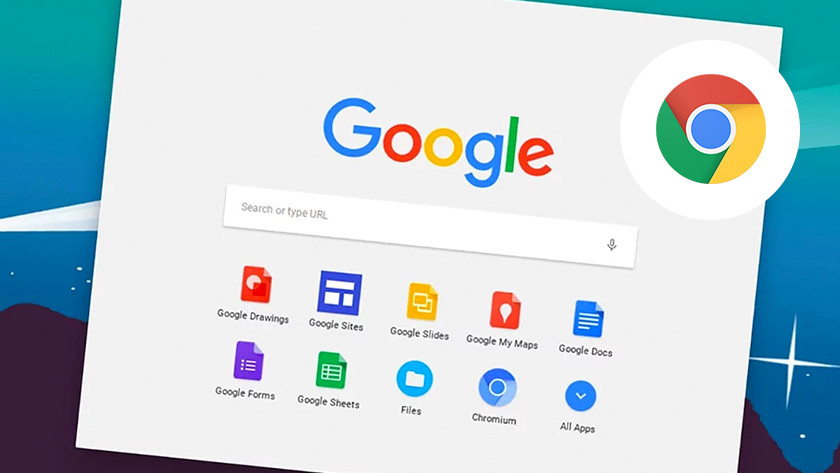About Google Chrome
Google Chrome (finally?) reduces memory and CPU drain. While a few days ago we were singing the praises of all the novelties of the latest version of Firefox, today it's the turn of its number 1 rival: version 57 of Google Chrome arrives with several new features, foremost among them a savings in the memory and CPU consumption. What is Google Chromecast? Well, there are a couple of them now, so let's start with their common features: the Google Chromecast is a puck-shaped streaming device that lets you beam video. Get more done with the new Google Chrome. A more simple, secure, and faster web browser than ever, with Google’s smarts built-in.
A security researcher has dropped a zero-day remote code execution vulnerability on Twitter that works on the current version of Google Chrome and Microsoft Edge.
About Google Chromecast
A zero-day vulnerability is a security bug that has been publicly disclosed but has not been patched in the released version of the affected software.
Today, security researcher Rajvardhan Agarwal released a working proof-of-concept (PoC) exploit for a remote code execution vulnerability for the V8 JavaScript engine in Chromium-based browsers.
Just here to drop a chrome 0day. Yes you read that right.https://t.co/sKDKmRYWBPpic.twitter.com/PpVJrVitLR
— Rajvardhan Agarwal (@r4j0x00) April 12, 2021While Agarwal states that the vulnerability is fixed in the latest version of the V8 JavaScript engine, it is not clear when Google will roll out the Google Chrome.
When the PoC HTML file, and its corresponding JavaScript file, are loaded in a Chromium-based browser, it will exploit the vulnerability to launch the Windows calculator (calc.exe) program.
While no developer likes a zero-day release for their software, the good thing is that Agarwal's zero-day cannot currently escape the browser's sandbox. The Chrome sandbox is a browser security boundary that prevents remote code execution vulnerabilities from launching programs on the host computer.
For Agarwal's zero-day RCE exploit to work, it would need to be chained with another vulnerability that can allow the exploit to escape the Chromium sandbox.


To test the exploit, BleepingComputer launched the Microsoft Edge and Google Chrome browsers with the --no-sandbox flag, which turns off the Chromium sandbox.
With the sandbox disabled, we could use Agarwal's exploit to launch Calculator on our Windows 10 device. Our tests' exploitable versions are Google Chrome 89.0.4389.114 and Microsoft Edge 89.0.774.76, which are the latest versions in the Stable channel.
This vulnerability is believed to be the same one used by Dataflow Security's Bruno Keith and Niklas Baumstark at Pwn2Own 2021, where the researchers exploited Google Chrome and Microsoft Edge.
About Google Chrome Os
getting popped with our own bugs wasn't on my bingo card for 2021. not sure it was too smart of Google to add that regression test right away... https://t.co/e0RUlmbxRK
— Niklas B (@_niklasb) April 12, 2021Google is expected to release Chrome 90 to the Stable channel tomorrow, and we will have to see if the upcoming version includes a fix for this zero-day RCE vulnerability.
BleepingComputer has contacted Google about the zero-day but has not received a reply as of yet.
Related Articles:
The update patches a total of seven security flaws in the desktop versions of the popular web browser
Google has released an update for its Chrome web browser that fixes a range of security flaws, including a zero-day vulnerability that is known to be actively exploited by malicious actors. The bugs affect the Windows, macOS, and Linux versions of the popular browser.
“Google is aware of reports that exploits for CVE-2021-21224 exist in the wild,” said Google about the newly disclosed zero-day vulnerability that stems from a type confusion bug in the V8 JavaScript engine that is used in Chrome and other Chromium-based web browsers.
Beyond the zero-day flaw, the new release fixes six other security loopholes, with Google specifically listing four high-severity vulnerabilities where fixes were contributed by external researchers. The first, indexed as CVE-2021-21222, also affects the V8 engine, however this time it is a heap buffer-overflow bug.
The second flaw, tracked as CVE-2021-21225, also resides in the V8 component and manifests as an out-of-bounds memory access bug. As for CVE-2021-21223, it is found to affect Mojo as an integer overflow bug. The fourth high-severity vulnerability, labeled CVE-2021-21226, is a use-after-free flaw found in Chrome’s navigation.
READ NEXT: Google: Better patching could have prevented 1 in 4 zero‑days last year
“Successful exploitation of the most severe of these vulnerabilities could allow an attacker to execute arbitrary code in the context of the browser. Depending on the privileges associated with the application, an attacker could view, change, or delete data,” warned the Center for Internet Security.
As is common with such releases, the tech titan has not disclosed any further details about the security loopholes until most users have had a chance to update their web browsers to the newest available version, mitigating the chance of the vulnerabilities being exploited by threat actors.
The Government Computer Emergency Response Team Hong Kong (GovCERT.HK) issued a security alert advising users and system administrators to update their browsers. “Users of affected systems should update the Google Chrome to version 90.0.4430.85 to address the issue,” said the agency.
Considering the disclosed vulnerabilities, users would do well to update their browsers to the latest version (90.0.4430.85) as soon as practicable. If you have automatic updates enabled, your browser should update by itself. You can also manually update your browser by visiting the About Google Chrome section, which can be found under Help in the menu bar.
About Google Chrome
Discussion
